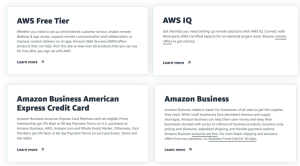
The height of basketball season is well underway (March Madness and NBA teams are gearing up for a playoff run), but I’ll bet you didn’t know how that relates to omni-channel marketing.
Just like basketball, omni-channel marketing is about teamwork — using the various marketing channels towards a single goal and delivering a unified customer experience. Some channels may be the top shooters and other channels may be great in the paint, but what makes everyone better is an elite point guard. They are often the heart of the team, make adjustments on the fly, and always make the right pass at the right time. When the star point guard is off the floor, even though you still have the same number of players, everyone on the team feels it.
In an increasingly social and mobile world, social analytics is the point guard of the omni-channel marketing team.
Why is social analytics the center of the action? Digital marketing, today, is being driven by growth in mobile and social. For one, more and more websites and apps are requiring log-in with a social identity (Facebook or Twitter for consumer websites, LinkedIn for business). But more importantly, consumers are spending more of their lives on social. With the decline in traditional media and the increase in integration of social into digital channels, social is one of the only guaranteed ways marketers can reach consumers. Social is the center of consumers’ lives…and marketers need to treat it as such.
The right social analytics know the ins and outs of all the players (social identity), measure and attribute the right statistics objectively, synthesize multiple kinds of data, and relay actionable information to the team.
Here’s what that looks like for marketers:
Digital Identity
Social profiles are consumers’ digital identities. Whether that’s a Facebook, Twitter, or LinkedIn log-in or an email address, that’s how consumers verify their identity and establish a presence across digital channels.
For marketers, tying together social profiles and their corresponding information makes it possible to deliver personalized and relevant messages no matter the touchpoint — the key to omni-channel success.
Measurement
To do great omni-channel marketing, marketers have to measure and judge the various channels against the same criteria–put them on equal ground. How can a marketer create a unified experience when optimizing one channel for reach, another channel for likes, and another for driving sales? Yes, it’s true that some channels are inherently better at certain things than others, but that doesn’t mean there shouldn’t be unified metrics.
The customer journey is no longer a straight line with every channel playing a specific role in the funnel. Unified metrics are the only way to truly compare channel performance. It gives marketers an apples to apples view, which is vital for making sure the entire marketing effort is running efficiently and optimally.
Attribution
Sophisticated attribution, as consumers have more channels to engage than ever, is critical, especially for social. Social, simply, is how people communicate today. It’s the new word of mouth. Have a great in-store experience? Tweet about it. Read an interesting article on a blog? Pin it. Proper attribution keeps all of these customer interactions organized. It’s not easy, and the growing prevalence of mobile social apps is making it even harder.
Here’s what the customer journey often looks like: I had been thinking about getting a new bicycle this year and have casually mentioned it to a few friends. One day, I get a mobile Facebook message from a friend about a bicycle startup that’s making high quality affordable bikes–the “Warby Parkers” of bicycles. I check out the website and end up bouncing. The next day, when I have more time to really look into it, I search for “bicycle startup” and get back to their website and get on their mailing list. A week later I get an email, which reminded me that I wanted to look more closely at the bike’s specs. I visited the site directly (typed in the URL), everything looked good, and I bought it. This is a long story about how difficult attribution is. Most analytics will attribute the conversion to direct because that was the last touch. But that oversimplifies what really happened. The vital step in the customer journey was that first Facebook message — my friend’s endorsement. Omni-channel marketing is all about the multiple touches, making sophisticated attribution all the more essential.
And to make things more complicated, when looking at web analytics, “direct” traffic is often disproportionately large for another reason. In most instances, that number is incorrect due to misattributed mobile social. Because most social apps, like the Facebook and Twitter app, don’t pass a referrer, they get attributed as direct. The same goes for most mobile email clients and text messages. In the bicycle example, when I clicked on the link in my friend’s message to me, that would look like a direct visit (equivalent to me typing in the URL). Social analytics that can correctly attribute these visits (and corresponding conversions) give marketers a ton of new depth and color to their omni-channel data.
Synthesizing 1st And 3rd Party Data
First-party data is what marketers collect from what happens on their website, and often includes page views, purchases, email registrations, etc. Third-party data is what happens everywhere else, like what customers do on social media or offline purchases.
Separately the data is useful, but together it’s powerful. It creates a data set with breadth, depth, and scale.
For example, it allows marketers to see that after a customer purchased a product, she shared it on Facebook. Or before making a big purchase, a customer repinned the product to her wishlist board and then later tweeted about it. These are all important data points to learn about the customer journey and make tweaks to make each channel more efficient.
Social analytics that synthesize the two types of data offer important customer insights for marketers’ omni-channel efforts.
Actionability
Finally, marketers need social analytics that deliver actionable data where insights can actually be drawn. Marketers certainly don’t want more data — they have plenty — they want and need the right data.
“Clients do not care about the size of our data; rather, they believe that a single targeted insight or idea can change the way they do business.” — Benjamin Spiegel, Managing Partner and VP-Innovation at Catalyst/GroupM
Marketers covet the data that can uncover that single targeted insight. They need analytics that can deliver just that.
Omni-channel marketing and sophisticated social analytics are synergistic — they make each other better. All the channel tools, without the right social analytics, isn’t going to be as successful. At the same time, the right social analytics, without all of the channel tools, isn’t going to be super useful.
Make sure you have the right social analytics for your omni-channel marketing efforts. Get that piece right and you might just win the championship.
(275)
Report Post



